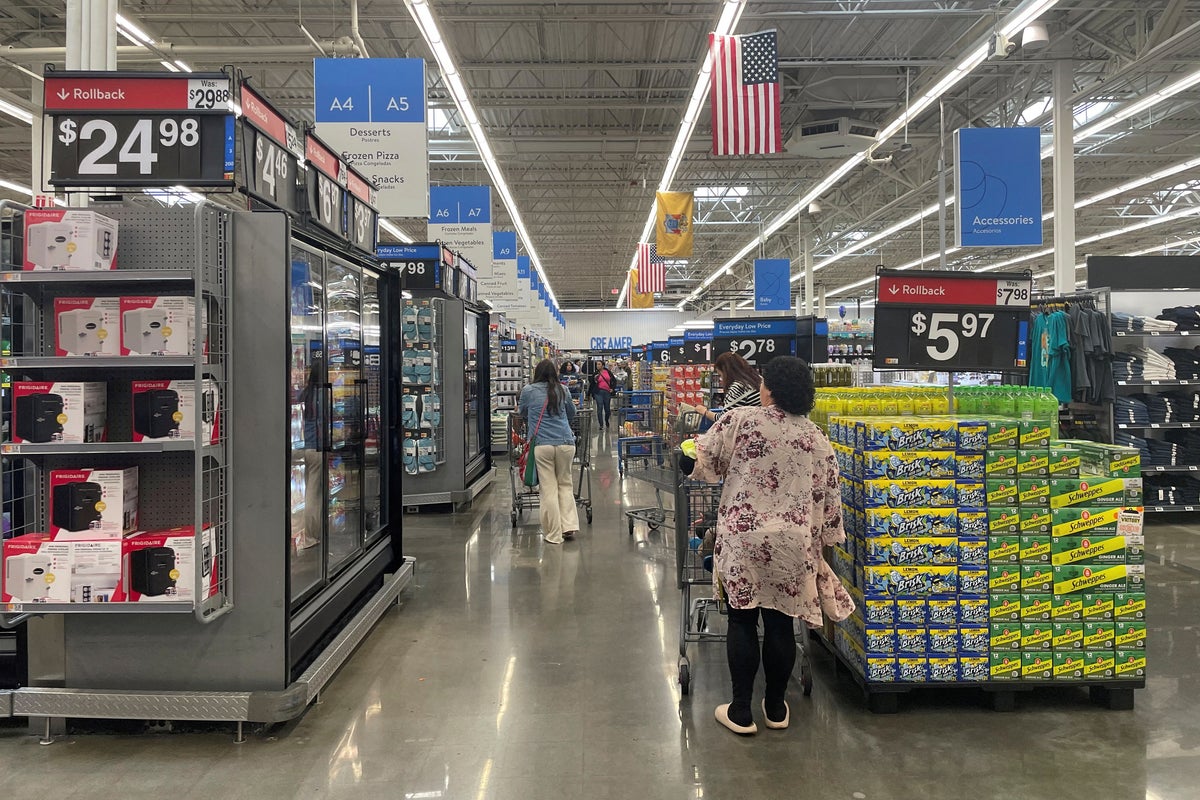
Price increases driven by President Donald Trump’s tariffs are sending more shoppers to Walmart as they search for more affordable home goods and groceries.
Walmart said it was absorbing enough of the costs brought on by Trump’s tariffs to keep price increases at the store lower than the national average, according to the Wall Street Journal.
The mega-retailer said its strategy for pulling in shoppers includes offering grocery discounts, fast shipping on delivery orders, and by increasing the quality of its fashion offerings.
Despite shoppers reportedly flocking to Walmart, the company still fell short of its earnings target in its latest quarter, according to the report. The company said that increased costs, plus payouts for worker and customer injury claims, cut into its bottom line.
On Thursday, Walmart reported a charge of $450 million related to settlements for worker and shopper injury claims. Executives said that the number of claims is not increasing, but settling the claims is getting more expensive.
“Our profit performance wasn’t what we wanted this quarter,” Walmart’s Chief Executive Doug McMillon said in a social media video for employees on Thursday. “As always, we should all stay focused on safety, whether that’s preventing slips and falls, by keeping our aisle clear or making sure our equipment is used properly.”
Walmart executives also warned that the low prices it can offer now won’t likely be around for long. As the company purchases more inventory at higher tariff prices, the costs will continue to tick up. Those costs will, at some point, have to be offloaded onto customers.
“We’re going to continue to try to navigate this on an item-by-item, category-by-category way to minimize the impact on the consumer,” the company’s Chief Financial Officer, John David Rainey, said in an interview with the Journal.
The company’s strategy to avoid high tariff prices has been to place early orders on products it believes will sell well, according to Rainey. It’s also cutting back on higher-priced items that carry higher tariff costs, anticipating that shoppers will be less likely to buy them.
The retailer’s shares dropped more than 4 percent Thursday, but were still up by nearly 30 percent over the same period last year.
McMillon noted that shoppers have, for the past few years, been reining in spending, and he anticipated that the tariffs affect on prices would only exacerbate that trend.
Approximately a third of Walmart’s stock comes from overseas suppliers. That has forced the company to increase its prices by approximately 10 percent on its imports and then absorbing the rest of the cost for its foreign goods, according to Rainey.
Overall, the company’s U.S. comparable sales — a number derived from its in-store and digital sales combined — has increased by 4.6 percent in the three-month period ending August 1.
Almost a third of U.S. businesses said in a recent survey that they will likely raise prices by the end of 2025 as they adjust to increasing costs and inflation, according to a new report.
The online lending marketplace LendingTree reports that more than 30 percent of businesses included in the survey expect their prices to increase within the next six months. Approximately five percent said their prices would decrease, and 65 percent estimated their prices would remain the same.
LendingTree chief consumer finance analyst Matt Schulz said in a press release: “Tariffs are likely playing a significant role in these concerns, but so is the overall sense of uncertainty that remains in the American economy.”
Trump initially announced his tariffs on “Liberation Day” in April before putting the plan on pause after the stock market plummeted and the Treasury bond market spiked.
After setting an August deadline for the tariffs to formally begin, Trump announced on August 11 that there would be another 90-day pause on tariffs against China as negotiations continue.
